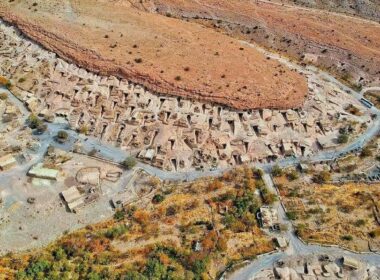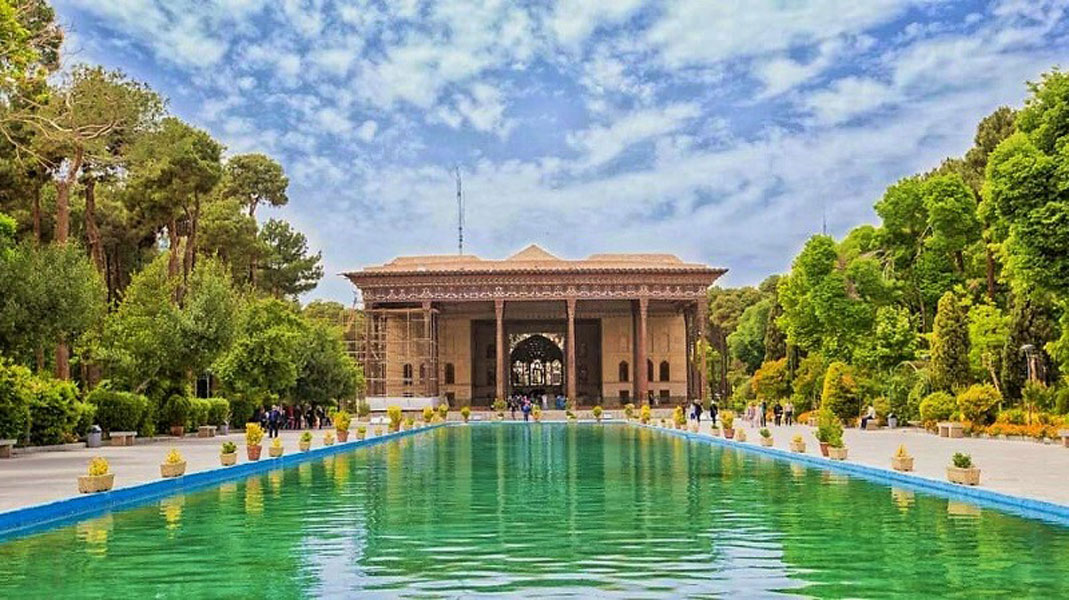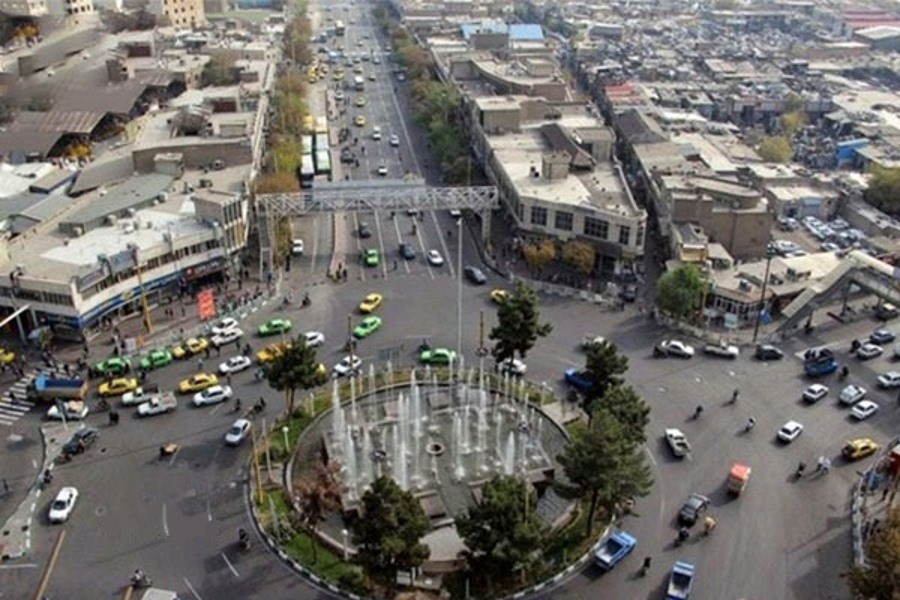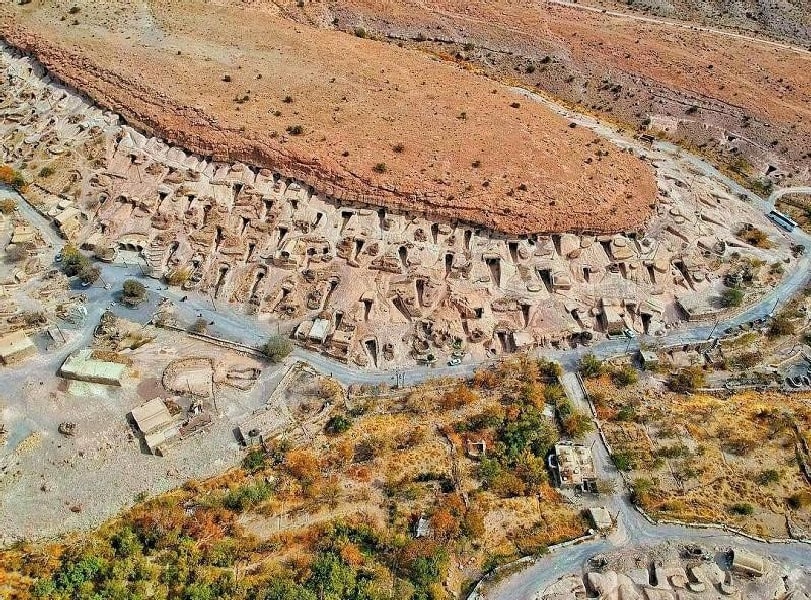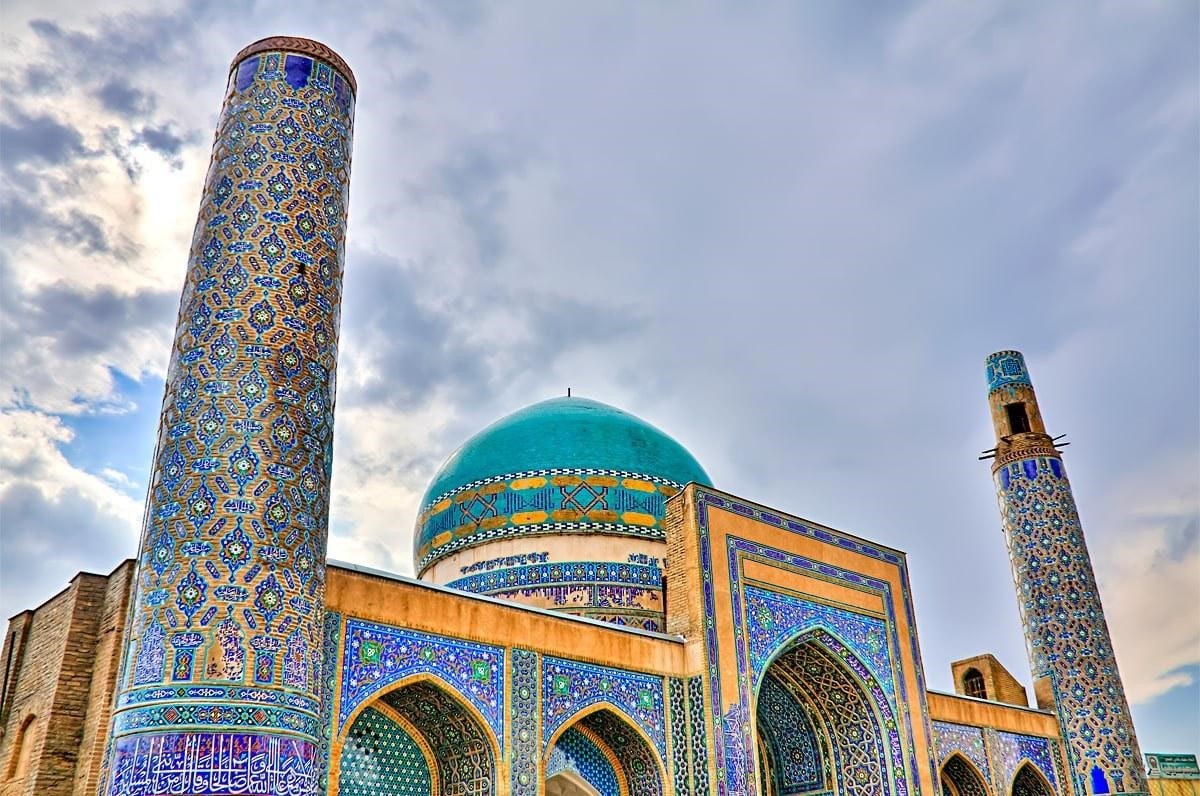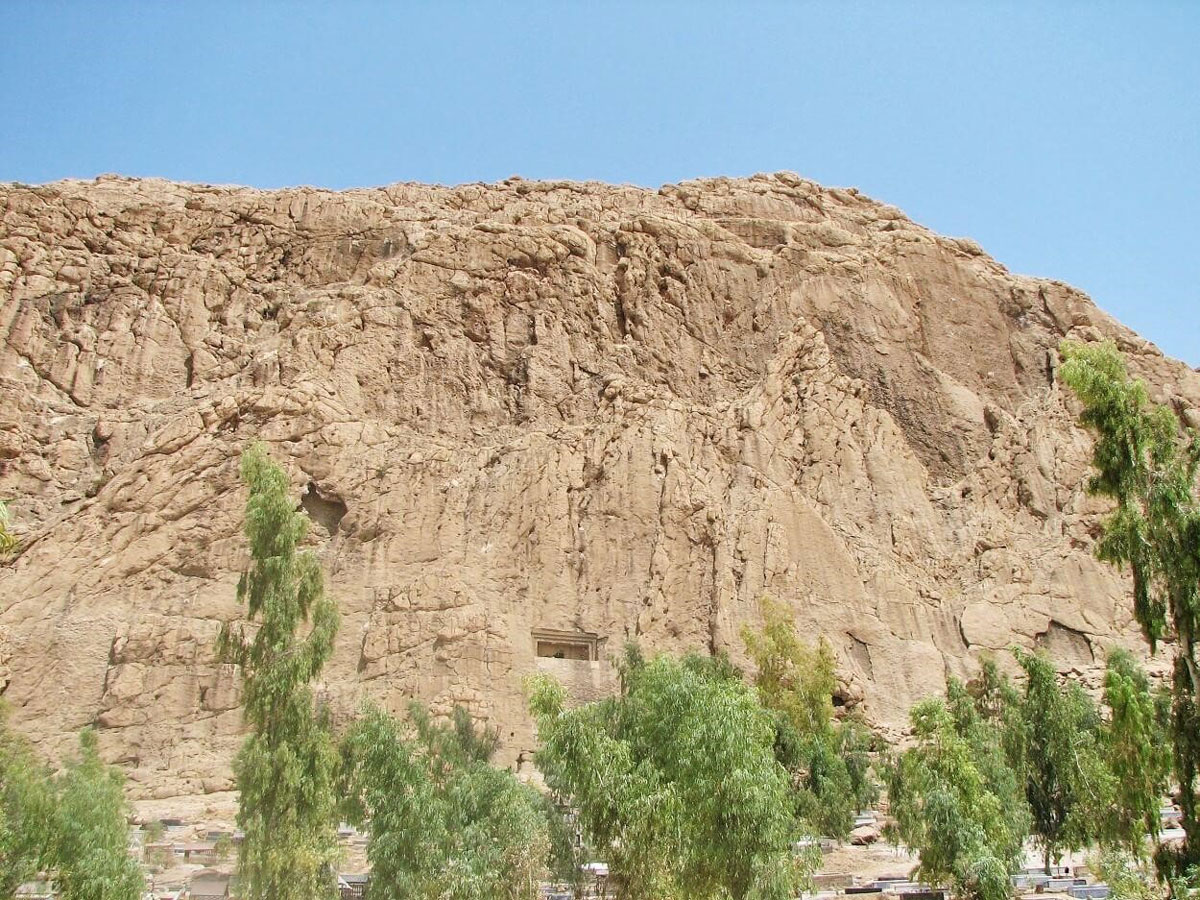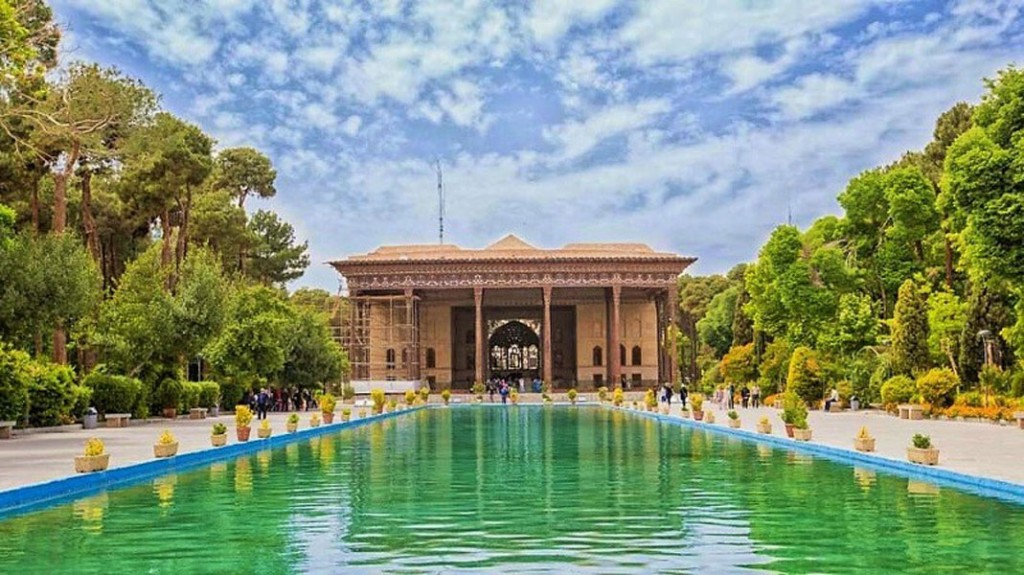
Isfahan city is one of the most beautiful cities in Iran, with many historical monuments. One of these world-renowned works is the Chehel Sotoon Palace (The palace with forty pillars). This palace is among the top Isfahan monuments that are decorated with beautiful tiles and paintings. It is located near Naqsh Jahan square in Isfahan.
Chehl Seton Palace is located in a very beautiful royal garden called the “Jahan Nama” garden. This garden is one of the 9 Iranian gardens registered in UNESCO’s list of World Heritage Sites. The building of the Chehel Sotoon Palace dates back to the Safavid era and Shah Abbas I and II.
During the time of Shah Abbas I, this mansion was a pavilion that was used to entertain the king and his guests. The main building of the palace, which can be seen today, was built during the reign of Shah Abbas II. Therefore, this mansion became a place for the king to meet his people and foreign guests.
It should be noted that the Safavids first built a palace in Qazvin called the Chehel Sotoon Palace. After the capital was moved to Isfahan, a new palace with the same name was built in this city too.
The Chehel Sotoon Palace of Isfahan was registered in the National Heritage List of Iran in January 1931. It was also included in the UNESCO World Heritage List in 1993.
The Reason for Naming of Chehel Sotoon Palace of Isfahan
The porch of the forty-column palace has twenty wooden columns, each of which is made from a plane tree trunk. The reflection of these columns in the water of the pool has caused a person to encounter forty columns upon entering the garden of this palace. For this reason, the said mansion is known as the Palace of Chehel Sotoon. These columns were originally decorated with a cover of beautiful mirrors.
In addition, the naming of the Palace of Chehel Sotoon could have other reasons. Since long time ago, the number forty was a symbol of abundance for the Iranians. It seems that the reason why this palace is named Chehel Sotoon is because of the number of columns.
Different Parts of This Palace
The building of the Chehel Sotoon Palace in Isfahan has different parts that we introduce separately here:
- Main and large hall
- The mirrored porch and the rooms on its sides
- A porch with twenty wooden columns
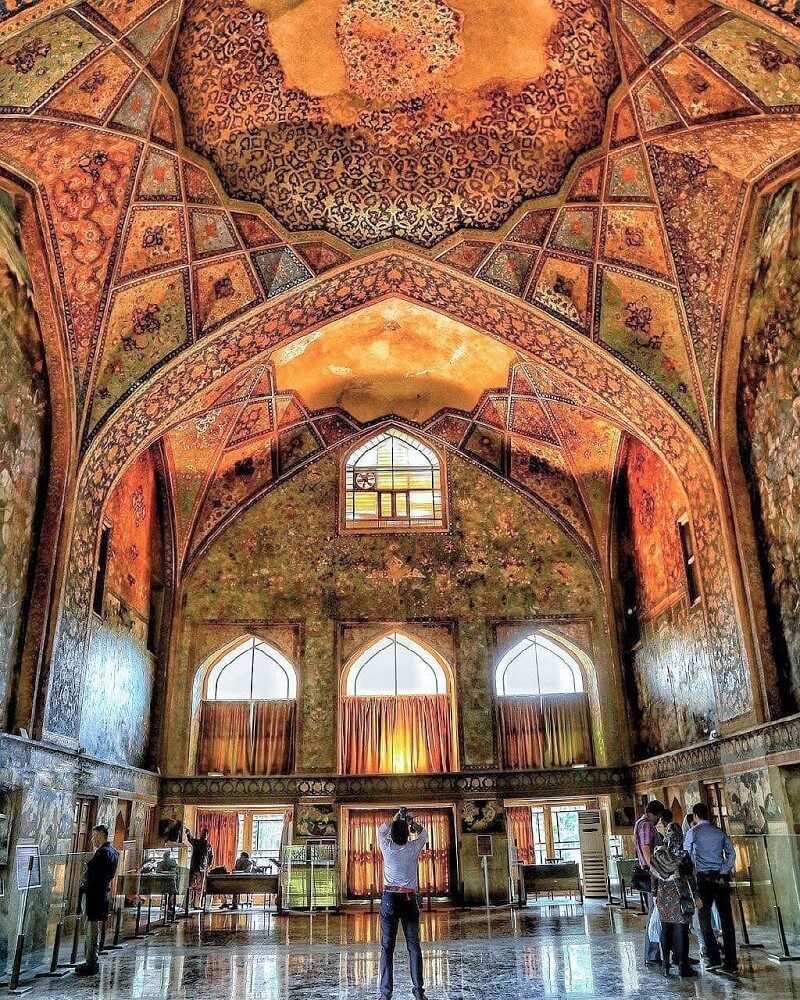
The main and large hall of the palace has gold decorations. This hall was for the king and his special guests.
Paintings are displayed on the wall of the main hall of Chehl Sotoon Palace in Isfahan. These paintings were created by the efforts of the great Safavid-era artist, Reza Abbasi. Taking the idea of enlargement, he created beautiful paintings in the style of Iranian miniatures.
In the inner corners of the hall of this palace, there are four large paintings that belong to the Safavid era. These paintings show scenes from the battlefields and receptions of the Safavid kings. The two middle panels also have the scenes of the previous panels, but they are the work of the famous Qajar era artist, “Sadegh Naqash Bashi”.
In addition, poems by Najib Kashani (a great poet of the era) written by Mohammad Saleh Esfahani have been written on the columned porch. During the reign of Zell-o Sultan, many artworks and paintings of the Safavid era were destroyed and these paintings were covered with plaster. The decorations of the columns were also destroyed. Also, at the end of the 18th century, this mansion was set on fire. Later, during the time of Shah Sultan Hossein Safavi, it was repaired.
Poems have come out from under the plaster on the front of the hall. One of the lines of these poems mentions forty columns as “the most blessed buildings in the world”. According to the Abjad letters used there, the number 1057 can be extracted. This number shows that the construction of the Chehel Sotoon Palace dates back to 1057 AH (After Hijrah in Islamic Calendar).
In recent years, many of the decorations of the Chehel Sotoon Palace in Isfahan have been damaged. Today, this palace has been turned into a museum. The remaining works of this palace are displayed in this museum.
Features of the Chehel Sotoon Palace
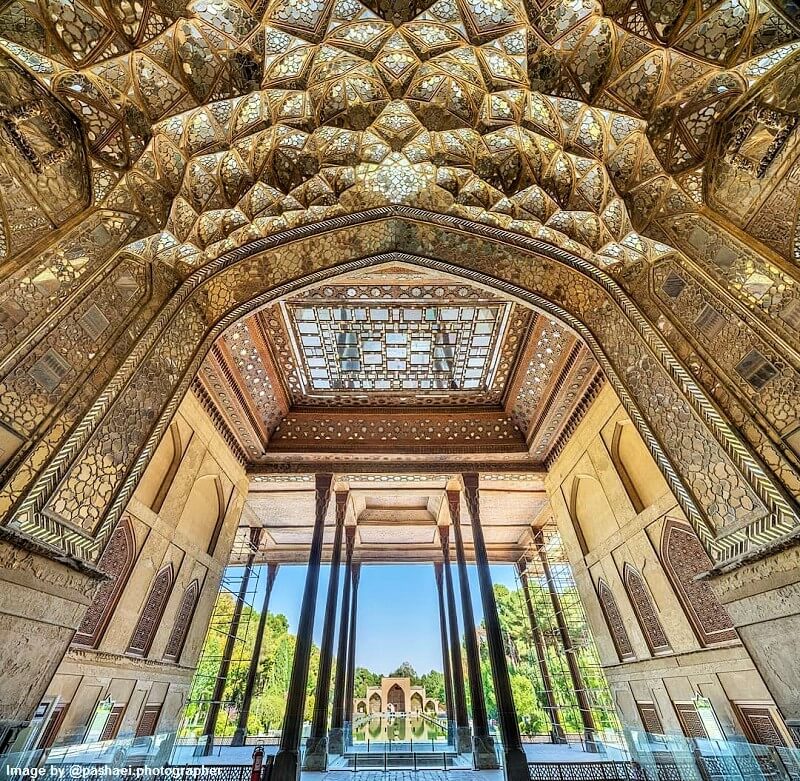
This palace has a lofty porch with 20 columns and a hall of mirrors. There are rooms in the north and south of the palace building. The Chehel Sotoon Palace of Isfahan dates back to 1647 AD (the fifth year of the reign of Shah Abbas II).
According to a manuscript found in this palace, the decorations and watercolor paintings on the plaster of this building were finished around 1650 AD. There is a famous watercolor painting found in this manuscript that belongs to the Zand dynasty.
The historical paintings and unique decorations of this palace lasted for three years. This shows that the Safavid kings attached special importance to their guests.
A luxurious and beautiful porch connects this palace to the garden. This porch has delicate wooden columns, made of pine and plantain, which are made to support the roof of the porch.
The roof of the porch is decorated with unique carvings. Also, part of the porch walls is decorated with large mirrors, pieces of colored glass, and beautiful paintings. These paintings have made the Chehel Sotoon Palace of Isfahan even more beautiful.
Features of the Garden of This Historic Work
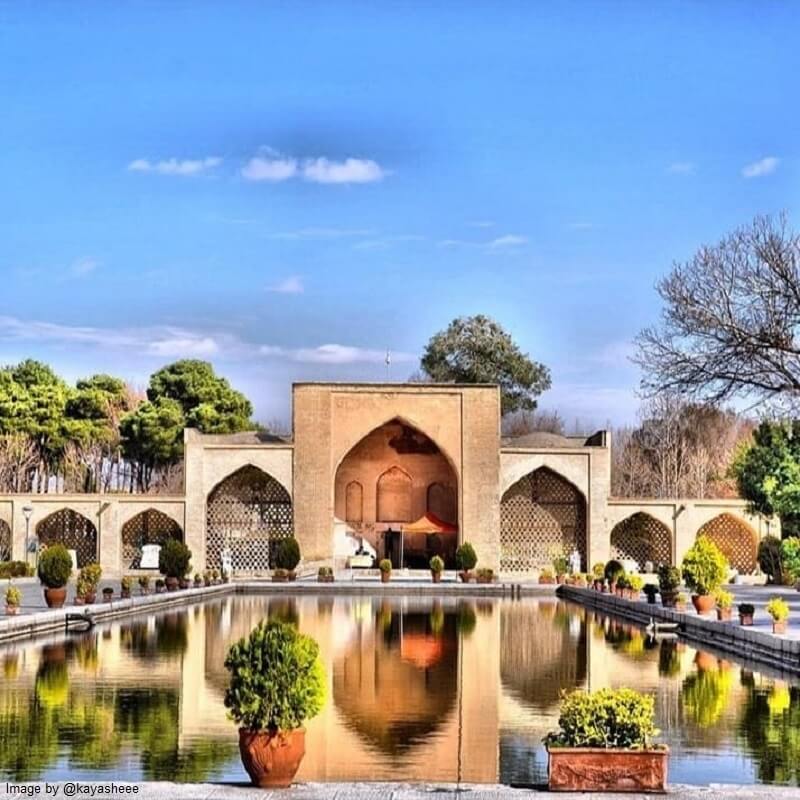
The area of this palace, including its garden, reaches 67,000 square meters. In its yard, there is a large swimming pool with lengths and widths of 110 and 16 meters. There are stone taps in all four corners of the pool, from which water pours into the pool. The stone lions around the pool as well as the marble plinths (stone walls on the sides of the pool) show the sculpting industry in the Safavid period.
There are rows of tall old trees around the pool. There are different types of trees in the Chehel Sotoon Palace, including sycamore, pine, juniper, elm, and black maple trees. The combination of trees with a pool in the middle of the yard has given this mansion a special beauty.
Do not Miss Visiting This Attraction
The city of Isfahan, which is famous in half of the world, has precious monuments and works of art in it. Each of these has unique features and characteristics that attract the attention of every viewer. Chehel Sotoon Palace of Isfahan is a luxurious palace with various paintings, mirror work, and its own architecture.
Iran’s top travel agencies include visiting this unique palace in their domestic tour packages. Our recommendation is that you don’t miss visiting this beautiful palace and be sure to visit it in the morning on an October day to see the reflection of the columns of the porch in the pool in front of it.
In addition, if the Chehel Sotoon Museum was open to the public, we recommend that you definitely visit its objects and learn more about the cultural heritage of recent centuries in Iran.


